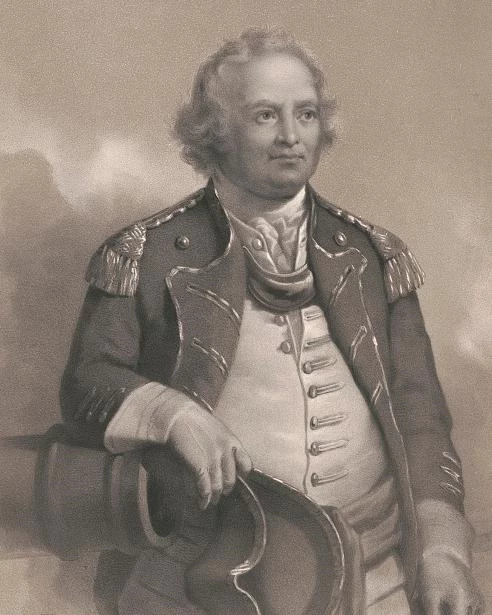Last updated: February 20, 2025
Person
Israel Putnam

Library of Congress Prints and Photographs Division
General Israel Putnam’s physical bravery and commitment to the revolutionary cause made him a popular and inspiring general. Though his lack of administrative and tactical skills damaged his military reputation, his early leadership gave him a significant role in the American Revolutionary War.
Putnam was born on January 7, 1718, in Salem, Massachusetts to a wealthy farming family. He married Hannah Pope in 1739. Putnam moved to Connecticut and bought a farm there, where it was cheaper and therefore easier for a young man to afford. Around the age of 25, he became locally famous for having crawled into a wolf’s den himself to kill it since the wolf had been terrorizing his and his neighbors’ sheep. This incident made him well known for his bravery, a reputation that followed him throughout his life.
Putnam served during the French and Indian War as an officer, fighting in multiple theaters, including Fort Ticonderoga and Havana. His skilled performance in war was noticed, as he was rapidly promoted to the rank of major. After this, he returned to his farm and was elected to the Connecticut legislature, serving from 1766 to 1768. Putnam protested against the Stamp Act and organized a Sons of Liberty group in Connecticut. In August 1774, during the shutdown of the ports in Boston by the British, he brought over 100 sheep to the city to help feed the citizens. Putnam was passionate about his politics, and by this time he did not deny the possibility of war against the British.
When fighting broke out at Lexington and Concord on April 19, 1775, Putnam immediately left Connecticut for Boston. He was made one of three generals in Connecticut soon after. He led his troops successfully in a mission to destroy supplies and burn a ship on Noddle’s Island in Boston Harbor in May 1775. On June 17, 1775, Putnam served as a field commander during the Battle at Bunker Hill. At this battle between British forces and New England colonial forces, some attribute the famous quote "Men, you are marksmen—don’t one of you fire until you see the white[s] of their eyes" to Israel Putnam; however, others credit this line to William Prescott.
Just prior to this battle, in early June, Congress unanimously voted to make him the fourth major general in the newly-established Continental Army. Congress only unanimously elected two generals: Israel Putnam and George Washington. With this decision, Washington arrived in Boston early July, joining Putnam and unifying colonial forces into the Continental Army.
Later, Putnam helped plan for the Battle of Long Island in New York in August 1776. After this battle ended badly for the Continental Army, people began to critique his tactical abilities. Washington initially gave Putnam important assignments, but as time went on Washington began to agree with Putnam’s critics and gave him less significant missions.
During his military career, Putnam was widely admired by his soldiers. He was known to spend time with lower ranking soldiers and officers, rather than only associating with officers of higher military rank and social class. He suffered a stroke in 1779 and was forced to retire from the military.
Sources
Bell, John. “George Washington’s Headquarters and Home.” Cambridge, MA: Longfellow House-Washington’s Headquarters, Department of the Interior, National Park Service, February 29, 2012.
Daniels, Bruce C. "Putnam, Israel (1718-1790), American Revolution general." American National Biography. 1 Feb. 2000; Accessed 29 Nov. 2023.
